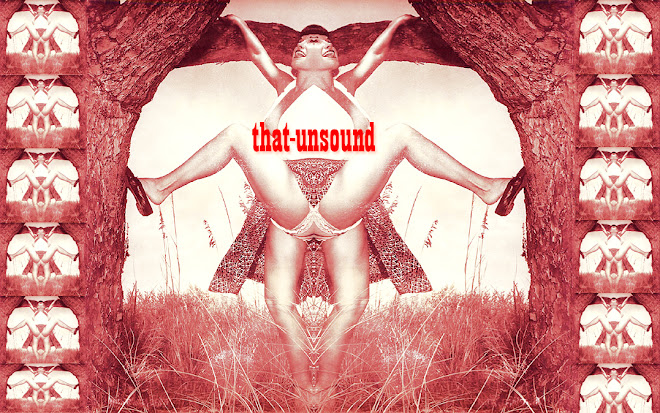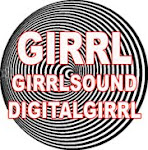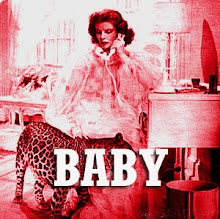Tristan Perich: 1-Bit Symphony (Part 1: Overview) from Tristan Perich on Vimeo.
12.12.11
8.12.11
22.10.11
Immersion into Noise=a great read available online ...
Labels: text
14.10.11
Beautiful sound machines
At the exhibition’s core are two innovative and interactive large-scale works, the Sound Wall and the Shadow Orchestra, together with smaller sound and light kinetic sculptures.
Vogel’s work inhabits the boundaries between fine art practices and performance traditions. It questions established relationships between sculpture and sound, seeing and hearing, the static and the live. They refuse to align with any single artistic movement, yet resonate with the aims of many.
Composer and sound artist, Dr Nye Parry, describes Vogel's pieces as “beautiful sound machines” which “ask new questions about the relationship between the spectator and the aesthetic object that bring it right up to date with contemporary artistic and philosophical enquiry.”
Labels: sound, sound-machines
13.10.11
3.8.11
fantastic Bob Milne's 4 track mind... seriously !!!
It's a story about Bob Milne that you won't believe.
reposted from A Music Long before Listening Blog
Image: Tom Johnson: Syncopated Texture (in Imaginary Music; Paris: Editions 75, 1974)
Labels: cachophony
1.8.11
A repost of a great talk by Disquiet in SanFrancisco-- lovely delicious notions
a repost because the notion of sound as a commentary is just so so interesting ...
Upcoming GAFFTA Talk: “Sound as Commentary”
If you're in San Francisco this week, please consider dropping by the digital-arts organization GAFFTA on Wednesday for a 6:00pm discussion session at which I'll be talking.Also speaking are musician and sound artist Roddy Schrock (fundamentallysound.org), who has contributed to two Disquiet.com remix projects, and technologist Barry Threw (barrythrew.com). The moderator is Luc Meier, who is the Interdisciplinary Programs Manager at swissnex San Francisco, "a Swiss knowledge outpost for science, education, art and innovation" (swissnexsanfrancisco.org).
Gray Area Foundation for the Arts (GAFFTA) is a tremendous institution in San Francisco, dedicated to fomenting digital culture. It's brought the work of artists such as Zimoun to town, and regularly hosts events on game development, audio synthesis, data visualization, and other such intersections of art and technology. This Wednesday's discussion is cosponsored by GAFFTA and Eyebeam, a New York "art + technology center" with which it shares many overlaps. Schrock is Eyebeam's Associate Director: Creative Residencies.
More on this Wednesday's talk at gaffta.org. It's scheduled to run from 6:00pm until 8:00pm. Cost is listed as follows: "$5 – $20 suggested donation (no one turned away for lack of funds)." posted by Marc Weidenbaum
Labels: sound
30.7.11
21.7.11
Sonia Boyce ... beautiful ... For you, only you: Mikhail Karikis, Alamire, Sonia Boyce
For more info on Sonia Boyce's fantastic work click here ...
Labels: girrl sounds, opera
19.7.11
18.7.11
Ether and the Voice: an Electronic Media Opera by Colleen Keogh
Ether and the Voice: an electronic media opera from colleen keough on Vimeo.
for more delights click here
Labels: digital, girrl sounds, opera
17.7.11
Marshall McLuhan (on the radio) MEDIUM IS THE MESSAGE!!!
He coined the phrase 'the global village', declared that 'the medium is the message', and he described what we now realise is the internet, 30 years before it existed.
Yet, McLuhan also warned of an 'age of anxiety' and the loss of privacy in the age of electronic media.
Now, at a time when our work, social and family lives are governed by media and interconnectivity, what can we learn from examining McLuhan's message? And where are we heading in the digital era?
The McLuhan Project is a major series of broadcasts on ABC Radio National and on ABC Digital Radio during the week of this significant centenary.
Beginning on 16 July on ABC Radio National and on the weekend of July 23 and 24 on ABC Digital Radio.
The McLuhan Project link
On Hindsight- Marshall McLuhan What are you doin? link
On Night Air - Media Mess Age link
CBC links
Labels: digital media, Marshall McLuhan
11.7.11
GIRRLSOUND new sound org. for women in sound
Labels: girrl sounds
10.7.11
Nonsequiter's Women in Sound Arts list
Artist’s names link to their own web site. If they don’t have a site, other links are shown. If an artist is known also as a performer, their primary instruments are listed. Two countries shown = born/resides, three = born/raised/resides. '
click here for the wonderous list
Labels: girrl sounds
7.7.11
5.7.11
women working linux
There, women will find resources on how to get more active in the linux community as a women.
3.7.11
1.7.11
25.6.11
woozy links comicsss at Coles comics manhaters ...
- NEW! It's That Nosy Dame (Sexy Golden Age Heroines)
- NEW! Easily Mused (Top-Notch comics, culture, and info)
- NEW! My Opinion Doesn't Matter (Little known, interesting Golden Age comics posted here)
- NEW! Star-Studded War Comics!
- NEW! Panelogical Pantheon (Fascinating and insane golden age comics blog)
- Stanley Stories (Great blog on comics master John Stanley)
- The Big Blog of Kid's Comics!
- Jack Kirby Museum (in-depth blog on SImon and Kirby and the folks who worked for them)
- Yesterday's Papers (great blog on newspaper comicc)
- Pappy's Golden Age Comics Blogzine
- Dial B for Blogazine (archives)
- Super Itch (Craig Yoe's blog)
- Fabuleous Fifities (Great old comics blog)
- Ward-O-Matic (art, animation, cool stuff)
- Dan Zettwoch (contemporary graphic storyteller Jack Cole fans would likely appreciate)
- The Greatest Ape (great comics)
- Stuff (John Kricfalusi's amazing blog)
- Portzebie (Rare EC stuff and unsurpassed insightful articles)
- Rare Harvey Kurtzman art archive
- ASIFA-Hollywood Animation Archive (also has great comics!)
- Golden Age Comic Book Stories
- Comic Crazys (Choice Great Comics)
- Cartoon Snap (great comics, how-to, and interesting articles)
- The Horrors of it All (Pre-code horror comics)
- Hairy Green Eyeball 2 (Cool Comics)
- Wang Dang Doodles (great blog on comics and related stuff by Toronto cartoonist Rich Dannys)
- Carter Family Comics
- Musenick (cool new music blog)
- Paul Tumey's Artwork
- Presentation Tree (Paul's Business)
- PowerPoint Warehouse
Labels: cartoons
22.6.11
16.6.11
3.6.11
Just started ... new 'Girrls Sound' networking hub on Linkedin
feel welcome to join ...
click here
Labels: girrl artists, sound
2.6.11
1.6.11
The Art of the Accident
click here
Failure and malfunction are inherent in all technological products. In The Art of the Accident, the concept of “accident” contains not just the idea that each machine brings with it its own form of disaster but also the suggestion that in a world of network technologies the old distinction between timeless form and time-dependent processes is becoming increasingly unclear.
Ars accidentalis recognizes the creative potential of the accident, the fall, and the instability of digital media. The book maps the transformation of space, time bodies, machines and architectures through the conceptual and noninstrumental use of the computer.
The Art of the Accident includes essays and interviews from composer Dick Raaymakers, biologist Humberto Maturana, urbanist Paul Virilio, literary scientist Katherine Hayles, endophysicist Otto Rössler and computer scientist Steve Mann. It also contains a series of artistic interventions by people such as Knowbotic Research, Perry Hoberman and Diller Scofidio. This fully illustrated book takes a synthesizing approach towards intersecting practices in art and science, outlining the basics of an ars accidentalis.
Essays and Interviews
- Dick Raaijmakers: Right to Risk
- Paul Virilio: Surfing the Accident
- Steve Mann: Experiment is Accident
- Perry Hoberman: Mistakes & Misbehavior
- Marcos Novac: Next Babylon: Accidents To Play In
- Lars Spuybroek: Where Space Gets Lost
- Brian Massumi: Event Horizon
- Humberto Maturana: We Living Systems
- Otto E. Rössler: The World as an Accident
- Knowbotis Research + cF: IO_Dencies - Questioning Urbanity
- N. Katherine Hayles: How does it feel to be posthuman?
Artist Projects
- John Bain: The Mutant Data Orchestra
- Mark Bain: The Live Room - Transducing Resonant Architecture
- Bureau of Inverse Technology: Bit Plane and other BIT Products
- Călin Dan: Happy Doomsday!
- Diller Scofido: Jet Lag
- Timothy Druckrey: Why 2k Or
- Masaki Fujihata: Nuzzle Afar
- Perry Hoberman: Systems Maintenance
- Jodi: Oss/****
- Kit: COTIS
- Knowbotic Research: Io_Dencies
- Gunther Krüger: Compactor {The Machine}
- Ed van Megen: Asa: Access All Accidents
- Seiko Mikami: World, Membrane And The Dismembered Body
- Gebhard Sengmüller: Vinylvideo
- Debra Solomon: The_Living
- Tamás Walicsky: Sculptures
- Herwig Weiser: Zgodlocator
- Aaron Williamson: Hearing Things (The Oracle)
- Online Realities In 3d
- The Unreliable Deaf98 Website
Labels: digital, digital media, essay, glitch
Gestalt sound
Gestalt (2003) is a short CG film by Thorsten Fleisch, made entirely from renderings of quaternion fractals.
for more click here
Labels: gestalt, sound, sounded-language
27.5.11
Ubu web's Sound by Visual Artists
Audio By Visual Artists, TELLUS 21
1.
2.
3.
4.
5.
6.
7.
8.
9.
10.
11.
12.
13.
14.
15.
16.
17.
18.
19.
20.
21.
22.
23.
24.
25.
26.
27.
28.
29.
30.
This issue of TELLUS explores audio work produced by visual artists from the Futurist Movement to the present. Luigi Russolo presented his theories on the use of noise in a musical context in 1913 with the "Art of Noise". Russolo destroyed the barrier which separated the works of precise harmonic sounds from that of indeterminate noise. With this manifesto, he proclaimed: "Ancient life was all silence. In the 19th century, with the invention of machines, Noise was born." His Futurist Orchestra of "families of noises" argued that the voice and sounds such as rumbles, explosions, whistles, snorts, screams, laughs and machines were to be regarded as musical instruments. With this in mind, I have touched on subsequent movements or events, defined by artists: Dada, Letterism, Art Brut, Fluxus, Conceptual Art and artists working with media appropriation that have been instrumental to audio and its history The two faces of this tape document different approaches to audio recording - sound and phonetic poetry, music concrete, storytelling, electronics, artists' bands and the sequential repetition of a sound, noise or word(s). With eighty-eight years of audio history passing through sixty minutes of time, TELLUS #21 accounts for less than one second of work produced by artists in this century.
-Claudia Gould
Engineered by Brenda Hutchinson at Studio PASS. NYC, 1988. Editors: Claudia Gould, Joseph Nechvatal, Carol Parkinson. Assistant Editor: Debbie McBride. Assistant: Charles S. Russell. Editor for this issue: Claudia Gould.
11.5.11
8.5.11
7.5.11
6.5.11
FIDGET by Kenneth Goldsmith
quote ...'Fidget is a transcription of writer Kenneth Goldsmith's every movement made during thirteen hours on June 16, 1997 (Bloomsday). This online edition includes the full text, a self-running Java applet version written by programmer Clem Paulsen, and a selection of RealAudio recordings from Theo Bleckmann's vocal-visual performance at the Whitney Museum of American Art on Bloomsday 1998.
Fidget attempts to reduce the body to a catalogue of mechanical movements by a strict act of observation. Goldsmith aims to be objective like the photographer Edward Muybridge. In Fidget, Goldsmith reduces language to its basic elements in order to record and understand movement in its basic form. Despite these aims, the dictates of the work like the self-observation and the duration of the act, create a condition of shifting referent points and multiple levels of observation that undermine the objective approach.
Goldsmith and Paulsen's collaboration has reconfigured the text of Fidget to substitute the human body with the computer. The Java applet contains the text reduced further into its constituent elements, a word or a phrase. The relationships between these elements is structured by a dynamic mapping system that is organized visually and spatially instead of grammatically. In addition, the Java applet invokes duration and presence. Each time the applet is downloaded it begins at the same time as set in the user's computer and every mouse click or drag that the user initiates is reflected in the visual mapping system. The different hours are represented in differing font sizes, background colors and degree of "fidgetness", however, these parameters may be altered by the user. The sense of time is reinforced by the diminishing contrast and eventual fading away of each phrase as each second passes.
Fidget was originally commissioned by The Whitney Museum of American Art at Philip Morris as a collaboration with vocalist Theo Bleckmann. The live performance was at The Whitney Museum of American Art at Philip Morris on June 16, 1998 at 8p.m. Bleckmann's vocal interpretations of Fidget are available here in RealAudio. A gallery installation of Fidget opened at Printed Matter in New York City. Printed Matter featured Goldsmith's collaboration with seamstress Sydney Maresca. The exhibition ran from June 11-September 4 1998.
Kenneth Goldsmith is the author of No. 111 2.7.93-10.20.96 (The Figures, 1997) and 73 Poems, a collaboration with vocalist Joan La Barbara (book 1994 by Permanent Press, compact disc 1994 by Lovely Music, Ltd.). His visual works have been exhibited in galleries and museums worldwide. Goldsmith is the editor of UbuWeb Visual, Concrete + Sound Poetry, a DJ at 91.1 WFMU in New York City, and a music critic at New York Press.'
website here
Labels: poetry


























